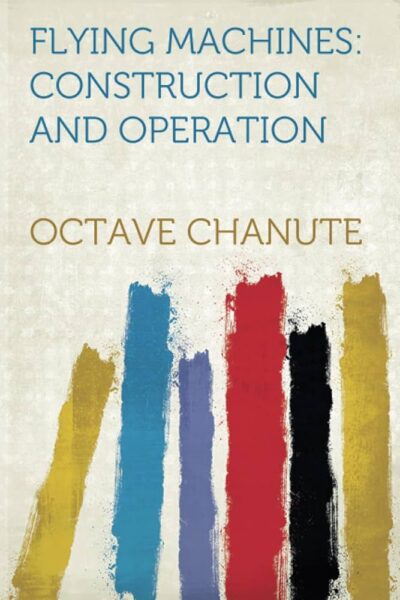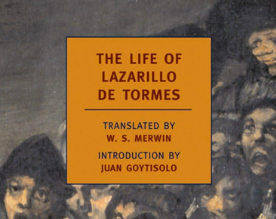LovelyMay
Stories
93
Chapters
1,516
Words
6.7 M
Comments
0
Reading
23 d, 5 h
-
 Chapter IV - Flying Machines Construction And Operation presents a clear comparison of the three principal types of manned flying machines: aeroplanes, helicopters, and ornithopters. Each model approaches flight through a distinct mechanism, but not all methods yield practical or efficient results. Among them, the aeroplane rises as the most successful, both in design application and operational reliability. Helicopters are recognized for their ability to ascend vertically using rotating blades, allowing…
Chapter IV - Flying Machines Construction And Operation presents a clear comparison of the three principal types of manned flying machines: aeroplanes, helicopters, and ornithopters. Each model approaches flight through a distinct mechanism, but not all methods yield practical or efficient results. Among them, the aeroplane rises as the most successful, both in design application and operational reliability. Helicopters are recognized for their ability to ascend vertically using rotating blades, allowing…-
142.7 K • Ongoing
-
-
 Chapter V - Flying Machines Construction And Operation walks readers through the foundational process of designing and constructing a practical gliding machine. It introduces essential structural choices and suggests starting with a biplane layout, given its balance between simplicity and performance. With a manageable frame and ample surface area, the biplane helps beginners grasp core aerodynamics without being overwhelmed by complexity. A biplane glider is effective because it divides the necessary lift…
Chapter V - Flying Machines Construction And Operation walks readers through the foundational process of designing and constructing a practical gliding machine. It introduces essential structural choices and suggests starting with a biplane layout, given its balance between simplicity and performance. With a manageable frame and ample surface area, the biplane helps beginners grasp core aerodynamics without being overwhelmed by complexity. A biplane glider is effective because it divides the necessary lift…-
142.7 K • Ongoing
-
-
 Chapter VI - Flying Machines Construction And Operation lays the groundwork for anyone beginning their journey into aviation by focusing on the balance between enthusiasm and caution. Instead of jumping into dramatic heights, the text promotes a measured approach where pilots learn close to the ground. This method ensures safety and builds a strong sense of control before attempting more ambitious flights. Learning to fly begins with understanding wind behavior and how body movement affects the glider’s…
Chapter VI - Flying Machines Construction And Operation lays the groundwork for anyone beginning their journey into aviation by focusing on the balance between enthusiasm and caution. Instead of jumping into dramatic heights, the text promotes a measured approach where pilots learn close to the ground. This method ensures safety and builds a strong sense of control before attempting more ambitious flights. Learning to fly begins with understanding wind behavior and how body movement affects the glider’s…-
142.7 K • Ongoing
-
-
 Chapter I: Dream Life and Real Life; A Little African Story introduces young Jannita, whose quiet existence is tethered to the harsh routine of tending goats under the unforgiving African sun. Her life, shaped by the rigid demands of her Boer employers, offers little warmth or affection. Seeking shelter beneath the spindly shade of a milk-bush, Jannita falls asleep, and her world transforms. In the cocoon of her dream, the plain turns to a gentle meadow, and the people around her speak with kindness and…
Chapter I: Dream Life and Real Life; A Little African Story introduces young Jannita, whose quiet existence is tethered to the harsh routine of tending goats under the unforgiving African sun. Her life, shaped by the rigid demands of her Boer employers, offers little warmth or affection. Seeking shelter beneath the spindly shade of a milk-bush, Jannita falls asleep, and her world transforms. In the cocoon of her dream, the plain turns to a gentle meadow, and the people around her speak with kindness and…-
13.2 K • Ongoing
-
-
 Chapter II: The Woman’s Rose begins with a quiet moment of reflection, as the narrator opens an aged wooden box tied with a simple cord. Inside, among trinkets faded by time, rests a rose—withered yet intact, its form preserved with unusual care. Unlike other flowers once pressed between pages or left to dry, this one has endured, kept not for its beauty but for its meaning. The narrator associates it not with romance or celebration, but with strength and a pivotal memory from her youth. It is a symbol…
Chapter II: The Woman’s Rose begins with a quiet moment of reflection, as the narrator opens an aged wooden box tied with a simple cord. Inside, among trinkets faded by time, rests a rose—withered yet intact, its form preserved with unusual care. Unlike other flowers once pressed between pages or left to dry, this one has endured, kept not for its beauty but for its meaning. The narrator associates it not with romance or celebration, but with strength and a pivotal memory from her youth. It is a symbol…-
13.2 K • Ongoing
-
-
 Chapter III: "The Policy in Favour of Protection" opens not with economics, but with an intimate encounter that reveals the tension between personal desire and moral restraint. In the glow of a firelit room, an older woman’s solitude is broken by the sudden arrival of a young visitor, cloaked not in winter’s cold, but in the anguish of love unreturned. The younger woman, refined in dress yet raw in emotion, implores her elder to intercede on her behalf—her affections aimed toward a well-known man, a…
Chapter III: "The Policy in Favour of Protection" opens not with economics, but with an intimate encounter that reveals the tension between personal desire and moral restraint. In the glow of a firelit room, an older woman’s solitude is broken by the sudden arrival of a young visitor, cloaked not in winter’s cold, but in the anguish of love unreturned. The younger woman, refined in dress yet raw in emotion, implores her elder to intercede on her behalf—her affections aimed toward a well-known man, a…-
13.2 K • Ongoing
-
-
 Introduction to Lazarillo of Tormes reveals not a story of grand knights or epic battles, but one grounded in the grit of everyday survival. Unlike the noble heroes populating Spain’s popular literature of the sixteenth century, Lazarillo is poor, cunning, and painfully aware of the world’s hypocrisies. His journey begins not with a sword, but with an empty stomach and an endless capacity for adaptation. The novel stood out sharply in its time, eschewing fantasy for realism and replacing idealized…
Introduction to Lazarillo of Tormes reveals not a story of grand knights or epic battles, but one grounded in the grit of everyday survival. Unlike the noble heroes populating Spain’s popular literature of the sixteenth century, Lazarillo is poor, cunning, and painfully aware of the world’s hypocrisies. His journey begins not with a sword, but with an empty stomach and an endless capacity for adaptation. The novel stood out sharply in its time, eschewing fantasy for realism and replacing idealized…-
108.4 K • Ongoing
-
-
 The introductory commentary and translator's note for the second part of The Life of Lazarillo de Tormes provide essential context and appreciation for Juan de Luna’s continuation of the original work. Despite Luna’s necessity to leave Spain influencing the sequel's tone, his storytelling prowess ensures a vibrant and engaging narrative. Unlike the "First Part," Luna’s sequel is renowned for its entertaining and highly descriptive scenes filled with wit and humor. In this continuation, memorable…
The introductory commentary and translator's note for the second part of The Life of Lazarillo de Tormes provide essential context and appreciation for Juan de Luna’s continuation of the original work. Despite Luna’s necessity to leave Spain influencing the sequel's tone, his storytelling prowess ensures a vibrant and engaging narrative. Unlike the "First Part," Luna’s sequel is renowned for its entertaining and highly descriptive scenes filled with wit and humor. In this continuation, memorable…-
108.4 K • Ongoing
-
-
 Chapter I opens with a candid address from Lazarillo, who introduces his life as a tale shaped by adversity and survival, not grandeur. He was born by the Tormes River, which earned him his surname, to parents who had little to offer besides their good intentions. His father, Tome Gonzales, worked at a mill but was later caught stealing from sacks of grain. The punishment was swift—he was sentenced and sent to serve in the army, where he eventually died. Left alone, his mother, Antona Perez, moved with…
Chapter I opens with a candid address from Lazarillo, who introduces his life as a tale shaped by adversity and survival, not grandeur. He was born by the Tormes River, which earned him his surname, to parents who had little to offer besides their good intentions. His father, Tome Gonzales, worked at a mill but was later caught stealing from sacks of grain. The punishment was swift—he was sentenced and sent to serve in the army, where he eventually died. Left alone, his mother, Antona Perez, moved with…-
108.4 K • Ongoing
-
-
 Chapter II follows Lazarillo as he escapes one hardship only to enter another, leaving behind a blind master and soon finding himself under the care of a miserly priest in Maqueda. What begins with cautious hope quickly descends into another form of torment, cloaked in the false piety of his new employer. The priest, outwardly devout and respected by his community, treats Lazarillo not as a servant to be cared for, but as a burden to be rationed. Meals are rare and portions absurdly small—little more…
Chapter II follows Lazarillo as he escapes one hardship only to enter another, leaving behind a blind master and soon finding himself under the care of a miserly priest in Maqueda. What begins with cautious hope quickly descends into another form of torment, cloaked in the false piety of his new employer. The priest, outwardly devout and respected by his community, treats Lazarillo not as a servant to be cared for, but as a burden to be rationed. Meals are rare and portions absurdly small—little more…-
108.4 K • Ongoing
-
- Previous 1 … 102 103 104 … 152 Next
